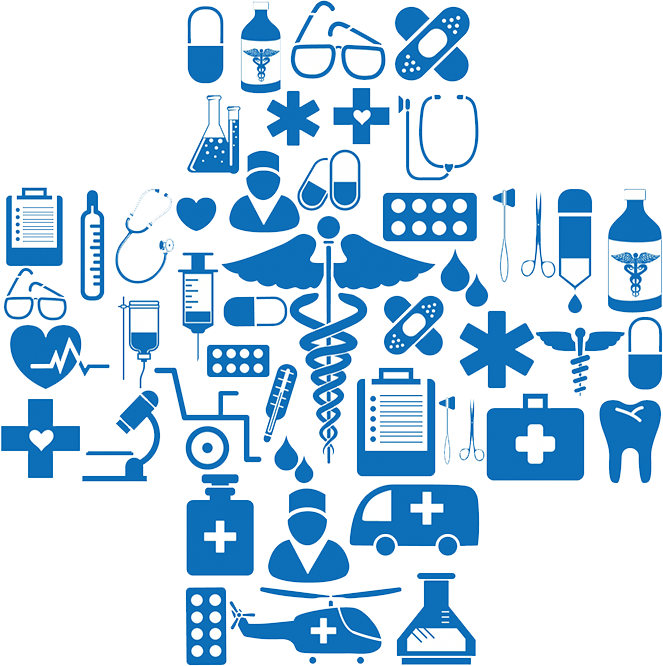What Is Revenue Cycle Management in Healthcare? Unlocking Financial Success in the Medical Industry
Revenue Cycle Management (RCM) in healthcare is an essential financial process that healthcare organizations use to manage the administrative and clinical functions associated with claims processing, payment, and revenue generation. RCM is integral to a healthcare organization’s ability to maintain its financial health and focus on providing quality patient care.
Implementing an efficient RCM system not only streamlines billing and collections but also reduces errors that can lead to denied claims and delayed payments. By optimizing these processes, healthcare organizations can significantly improve cash flow and reduce operational costs. Moreover, a well-managed revenue cycle allows providers to allocate more resources towards enhancing patient care services, ultimately leading to improved patient satisfaction and outcomes.
Investing in a robust RCM solution is not just about financial stability; it’s about positioning the organization for growth in an increasingly competitive healthcare market. By leveraging advanced technologies such as automation and data analytics within RCM, healthcare organizations can gain valuable insights into their operations, identify areas for improvement, and strategically plan for future challenges. Therefore, adopting a comprehensive RCM approach is crucial not only for safeguarding financial performance but also for elevating the overall quality of care offered to patients.
In the healthcare industry, having a robust RCM process is crucial for managing every aspect of patient interaction—from their first inquiry to the final payment. This system guarantees that all the necessary information is accurately collected and documented. It also ensures that patients are billed only for the services they actually receive, prompts timely communication with third-party payers, and efficiently handles payment collections. Adopting such a system can drastically enhance both operational efficiency and financial outcomes in healthcare facilities. By implementing a comprehensive RCM process, healthcare providers can significantly reduce administrative burdens and minimize errors in billing and coding.
This streamlined approach not only improves patient satisfaction by ensuring transparent and error-free bills but also accelerates the revenue cycle, allowing facilities to maintain a healthy cash flow. Moreover, an effective RCM system provides valuable insights into financial performance through detailed analytics and reporting, enabling decision-makers to identify trends and optimize resource allocation. Ultimately, investing in a robust RCM process empowers healthcare facilities to focus more on delivering high-quality patient care while maintaining financial stability.
The revenue cycle is a vital part of any healthcare business—it’s an intricate interaction with patients involving numerous touchpoints. Proper management of these functions ensures high patient and clinical satisfaction scores, while mismanagement can lead to avoidable denials and bad debts, ultimately harming the organization’s reputation. It’s crucial to handle the revenue cycle effectively to uphold the organization’s standing and success. Investing in advanced technologies and streamlined processes can significantly enhance the efficiency of the revenue cycle. By implementing automation tools and data analytics, healthcare providers can reduce errors, speed up billing processes, and improve overall accuracy. This not only enhances patient experience by reducing wait times and confusion but also ensures that payments are received promptly, keeping the cash flow steady.
Training staff to understand every aspect of the revenue cycle fosters a culture of accountability and precision. When team members are well-versed in best practices for managing claims submissions or addressing patient queries about bills, they contribute to a smoother operation that benefits both patients and the organization alike. Ultimately, prioritizing effective revenue cycle management is not just about financial gain—it’s about building trust with patients through transparency and efficiency. This approach will fortify your organization’s reputation as a reliable healthcare provider committed to excellence in every interaction.
The revenue cycle encompasses a wide range of activities, from the initial scheduling of an appointment to the final payment of a bill. Here’s a detailed look at the steps involved, organized within the three primary revenue cycle phases:
1. Order to Intake
This phase covers the initial steps where patient engagement and administrative preparation take place:
– Scheduling: Booking patient appointments efficiently.
– Pre-registration: Gathering patient information before they arrive, including insurance details.
– Clearance: Verifying insurance eligibility and authorization for procedures.
– Financial Counseling: Discussing costs and payment options with patients, providing clarity and transparency.
– Online/In-Person Arrival: Managing the actual arrival of patients, ensuring smooth check-in.
– Pre-service Payments: Collecting payments due before services are rendered, such as co-pays.
2. Care to Claim
This phase involves the actual care provided to the patient and the documentation needed to support billing:
– Level of Care: Determining the intensity of medical services a patient requires.
– Case Management: Coordinating various aspects of patient care, including transitions between care levels.
– Utilization Review: Assessing the necessity and efficiency of the healthcare services provided.
– Charge Optimization: Ensuring all services are captured and billed at the optimal rate.
– Coding: Accurately coding diagnoses and procedures according to ICD-10 and other relevant standards.
– Acuity Capture: Documenting the severity of a patient’s condition to support billing.
3. Claim to Payment
The final phase focuses on the billing and collections aspects of the cycle:
– Billing: Generating and sending out invoices or claims to patients and insurers.
– Patient Payments: Receiving payments directly from patients.
– Denials Management: Handling and resolving denied claims from insurers.
– Customer Service: Addressing patient inquiries and concerns about billing and payments.
– Reconciliation: Ensuring payments are processed correctly and financial records are accurate.
Effective Revenue Cycle Management involves seamless coordination between these steps to ensure that there are minimal delays and denials in claims, and that revenue is captured for all services rendered.
Properly executed RCM not only stabilizes the financial groundwork of a healthcare provider but also enhances patient satisfaction by creating a smooth and understandable billing process. By focusing on every phase of the RCM, healthcare organizations can optimize their workflows, reduce errors, and improve their overall financial health.


4 thoughts on “Understanding the Basics of Revenue Cycle Management in Healthcare”
Comments are closed.